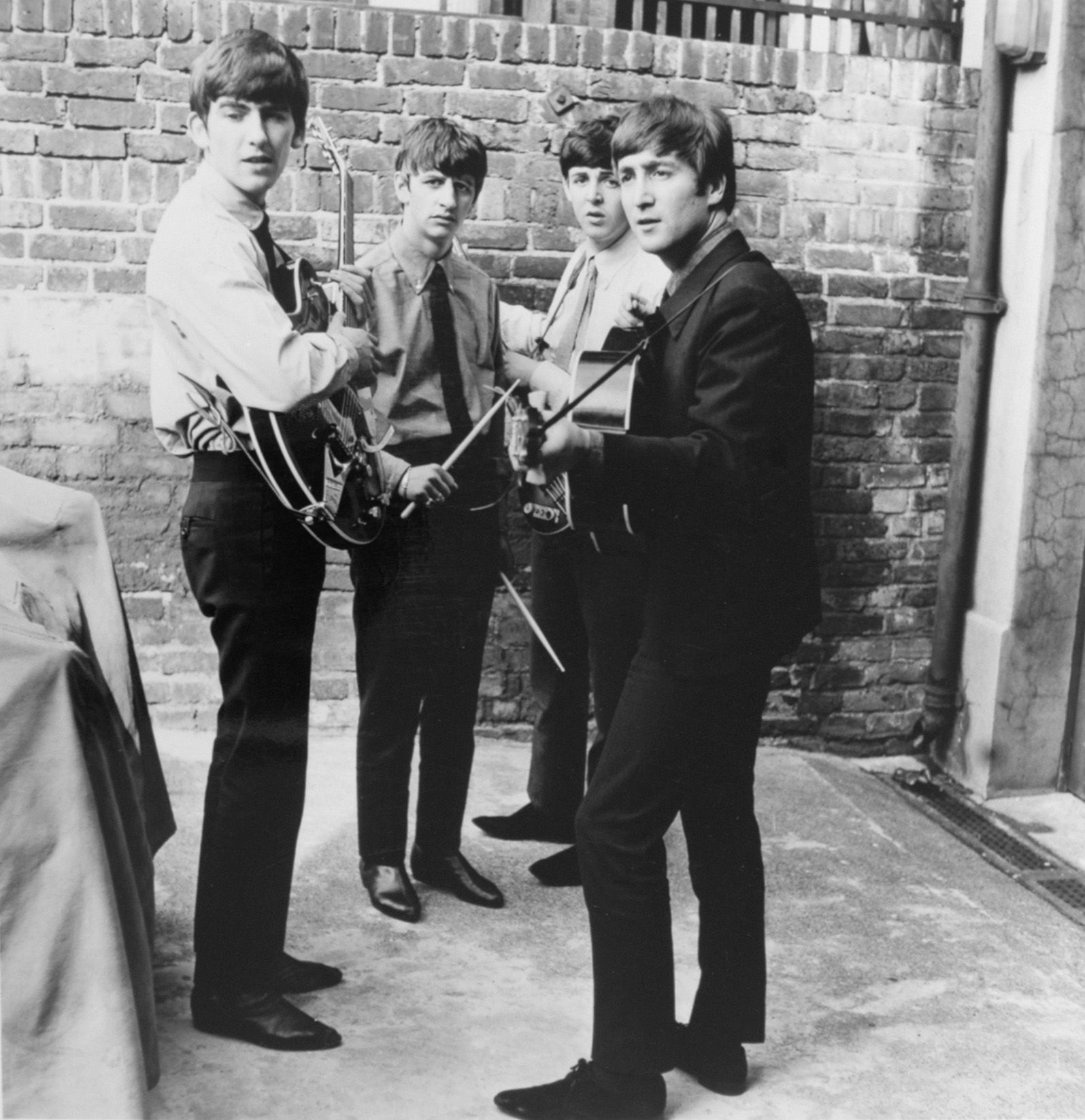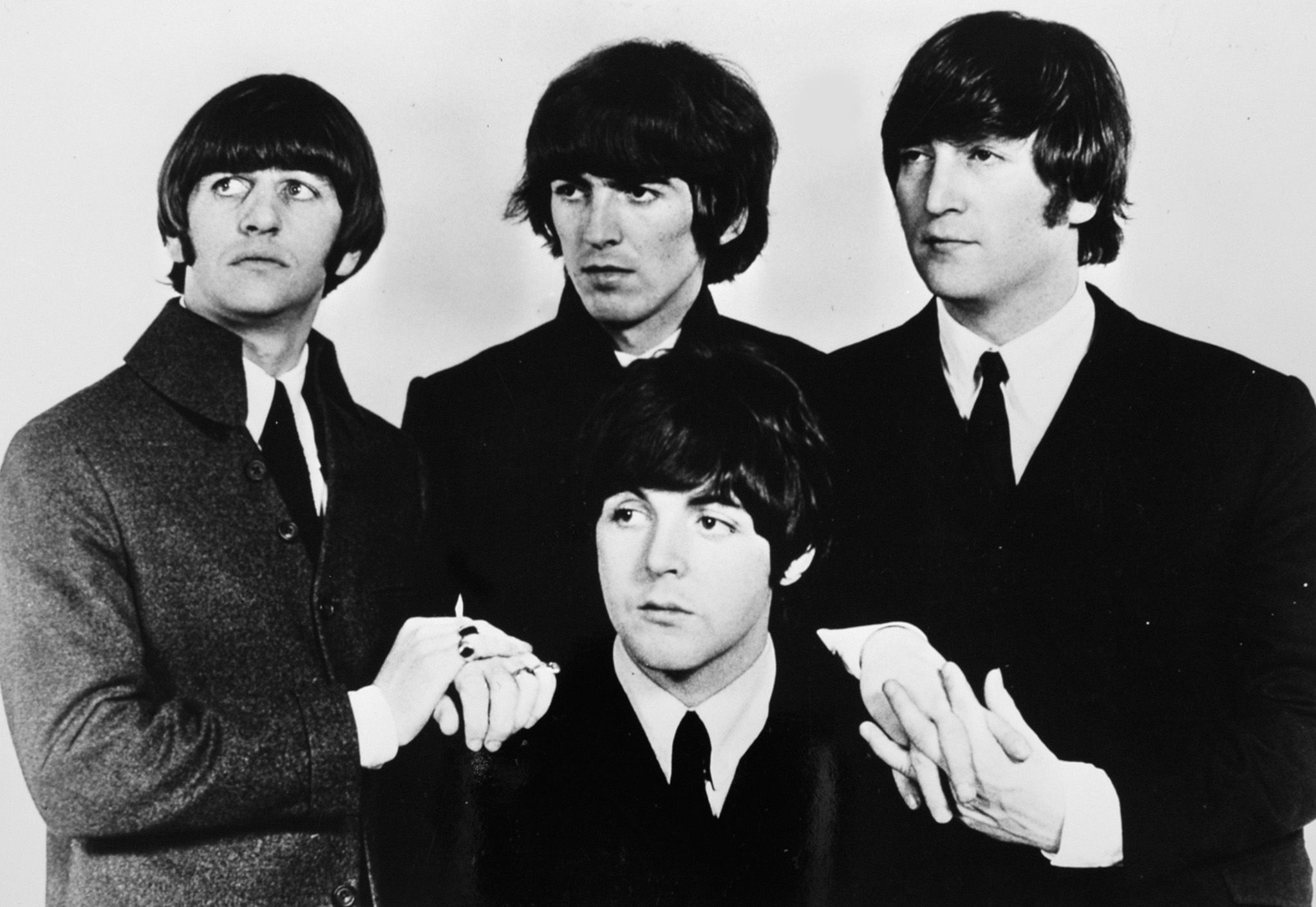Let It Be
Written by John Lennon and Paul McCartney

The Beatles were the ultimate hit machine of the 1960s, a brilliant rock ‘n’ roll band, who wrote great songs and – over an extraordinary period of intense creativity – captured the imagination of hundreds of millions of fans all across the globe. In the process, the fab four changed the world of music entirely – and arguably changed the world in important ways too. While the group were from Liverpool in England, three of the four members had Irish roots of which they were immensely proud.
Things were in a state of flux within the band when ‘Let It Be’ was released as a single on 6 March, 1970. It turned out to be the last record released by The Beatles before Paul McCartney announced he was leaving the band via a press release, issued on April 10 that year. The song debuted at No.6 on the US Billboard charts. It was the highest entry ever at that time, but that was just the beginning. The Beatles climbed to the top spot – making ‘Let It Be’ The Beatles nineteenth US No.1 – before going on to sell over 2 million copies in America alone. It reached No.1 in at least nine other countries and went platinum in the UK. It was the appropriately poignant and utterly memorable title song to The Beatles’ final album.
The Story Behind The Song
Liverpool is famous for its deeply-embedded links to Ireland. Historically, it was the city where countless thousands of Irish emigrants landed – and where many of them stayed, putting down roots, marrying and rearing families. The city was often referred to as ‘the real capital of Ireland’. “We’re all Irish,” John Lennon declared, when the band played Ireland in 1963. He wasn’t exaggerating greatly. John’s own grandparents, on his father’s side – John (Jack) Lennon and Mary Anne “Polly” Maguire – were both born in Dublin. John thought about returning to Ireland permanently – in 1967, he bought Dorinish Island off the coast of Co. Mayo, but he never got around to constructing the house he had planned to build there. Meanwhile, George Harrison’s grandfather on his mother’s side, John French, came from Co. Wexford. He had cousins living in Dublin, with whom he kept in touch, after The Beatles became successful.
Colm Wilkinson plays Let it Be on the Late Late Show
Paul McCartney had Irish roots on his father’s side – either his grandfather or his great grandfather headed for Scotland from Ireland before making their way to Liverpool. More crucially, his maternal grandfather, Owen Mohan, was a native of Tullynamalra in Co. Monaghan. Owen moved to Liverpool, where he worked as a coal man, and married Mary Theresa Danaher (also of Irish background). James Paul McCartney was born to Jim and Mary Patricia McCartney (née Mohan) on June 18, 1942, and he and his brother Mike were baptised in the Irish tradition as Catholics, although they were raised non-denominationally.

The Beatles: (l to r) Paul McCartney, Ringo Starr, George Harrison and John Lennon
The Beatles: (l to r) Paul McCartney, Ringo Starr, George Harrison and John Lennon
At the age of fourteen, McCartney lost his mother, when she died from complications during a cancer operation. This was something he had in common with his future songwriting partner, John Lennon, who also lost his mother – she was killed in a tragic traffic accident – while he was still a teenager.
As with all Beatles songs penned by either of them, ‘Let It Be’ was credited to Lennon/McCartney, but this was very much a Paul McCartney song. A gospel/soul ballad, it stemmed from a dream McCartney had in 1968. That was a time of great stress and overwork – the manager of The Beatles, Brian Epstein, had died in 1967 and Paul laboured harder than anyone else to keep the band going. In the middle of all that, he had a dream in which his mother spoke to him.
A charity version of Let It Be recorded following the Zeebrugge Disaster
“I immediately felt at ease, and loved and protected,” Paul reflected in his book, The Lyrics (2021), written with the Irish poet Paul Muldoon. “My mum was very reassuring and, like so many women often are, she was also the one who kept our family going. She kept our spirits up. She seemed to realise I was worried about what was going on in my life and what would happen, and she said to me, ‘Everything will be all right. Let it be.’”

Paul McCartney: front and centre on 'Let It Be'
Paul McCartney: front and centre on 'Let It Be'
The development of the recorded version is revealed in The Beatles: Get Back, directed by Peter Jackson for Disney. The band attempted it several times. It was first worked on briefly during the recording of the White Album (released November 1968) and again during the January 1969 sessions that would become the film Let It Be. The take that was released as a single was recorded during the final day of recording, with McCartney on piano, George Harrison on guitar, John Lennon on (six string) bass, Ringo Starr on drums and Billy Preston on organ. Paul McCartney would overdub the final bass part later, to replace Lennon’s. The single (produced by George Martin) and the album version (produced by Phil Spector) differed, thanks to two separate guitar solos recorded by George Harrison.
The single was a huge global hit, hitting the No.1 spot in the US (where it sold over 2 million copies), Canada, Australia, Austria, Hungary, Netherlands, New Zealand, Norway, Switzerland and more. Oddly, it peaked at No.2 in the UK and No.3 in Ireland. The album, however, was a UK No.1 and went 4 times platinum in the US, as well as charting all over the world.
Although The Beatles never played the song live, McCartney did choose it for his Live Aid set in 1985 – his microphone failed which prompted David Bowie, Pete Townshend, Alison Moyet, and Bob Geldof to take to the stage to help out. McCartney also sang it, alongside Harrison and Starr, at a London memorial service for his late wife Linda in 1998.

Paul McCartney, with his famous Hofner bass guitar – and yes, he is left-handed...
Paul McCartney, with his famous Hofner bass guitar...
As with many Beatles songs, there have been hundreds of cover versions of ‘Let It Be’, with everyone from Nana Mouskouri to Nick Cave having a go, along with Ike and Tina Turner, Gladys Knight and the Pips, Joan Baez, Bill Withers, Ray Charles, Richie Havens, Chris de Burgh, Chrissie Hynde, Irish country star Daniel O'Donnell and more. None, however, can compare with Aretha Franklin’s beautiful soul reading from 1970. Perhaps the most famous ‘other’ version is the Ferry Aid charity single from 1987, recorded and released to raise funds for the families of the victims of the Zeebrugge ferry disaster. The single, the cast for which included McCartney himself, spent three weeks at No.1 in the UK and was a hit across Europe as well.
Let it Be – Live Aid 1985
The band’s love of Ireland landed them in trouble on occasion. On the John Lennon and Yoko Ono album, Sometime in New York City (1972), John Lennon (and Yoko Ono) wrote and recorded two Irish-themed songs: ‘Sunday Bloody Sunday’, which was inspired by the bloody events of Bloody Sunday, January 30, 1972 and excoriated the British, for the slaughter of innocents; and the similarly polemical ‘The Luck of the Irish’. Both were banned by the BBC. Not to be outdone, Paul McCartney (and Linda McCartney) wrote ‘Give Ireland Back To The Irish’ the day after Bloody Sunday. Released as a single by Paul McCartney and Wings, in packaging that was festooned with shamrocks, it reached No.1 in Ireland and Spain – but it too was banned by the BBC.
In comparison, ‘Let It Be’ was a doddle. While the chord sequence might appear simple enough on paper, it is another example of Paul McCartney’s remarkable melodic genius and his innate ability to connect. And we have his Irish mother Mary to thank for it. “It’s always been a communal song,” he said. “Those moments work really well with a crowd. You see a lot of people holding their partners, or friends or family in their arms and singing along.”
Sing it: “Let it be/ Let it be/ Let it be/ Let it be/ There will be an answer/ Let it be/ Let it be…”
